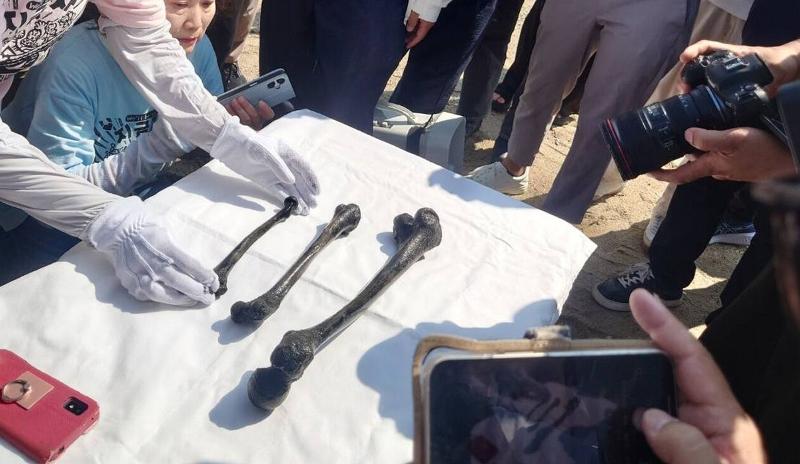
A Japanese civic group to commemorate the 1942 flooding of a coal mine on Aug. 25 said it discovered in an investigation what appeared to be the thigh bones of a victim of the flood there in Chosei coal mine of Ube, Yamaguchi Prefecture, on the Japanese island of Honshu. (Korean Buddhist Avalokitesvara Order)
By Yoo Yeon Gyeong
The supposed remains of Korean victims of forced work in the Chosei coal mine in Ube, Yamaguchi Prefecture, on the Japanese island of Honshu were discovered on Aug. 25.
A Japanese civic group for preserving the memory of the 1942 flooding of the mine that day said that at 2 p.m., its underwater investigation found what was assumed to be human thigh bones at the accident site.
Three bones believed be those of the victims were discovered, with the longest measuring 42 cm. The Korean diver who found them said, "Three pairs of boots were found lying nearby, and we confirmed the remains of four victims."
Caused by a leak in the tunnel, the accident occurred on Feb. 3, 1942, in an underground tunnel about 1 km away from the coast of Ube. The death toll was 136 Koreans and 47 Japanese.
The group will ask police to examine the remains for identification. The probe will continue through Aug. 26, raising the possibility of more bones being found.
dusrud21@korea.kr